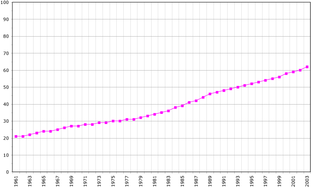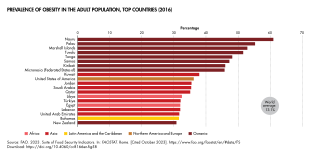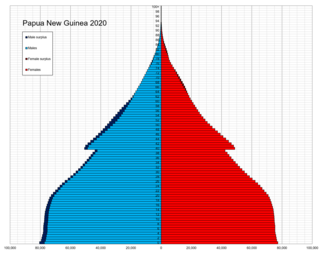This article may be in need of reorganization to comply with Wikipedia's layout guidelines .(April 2024) |
| Demographics of Fiji | |
|---|---|
 Fiji population pyramid in 2020 | |
| Population | 884,887 |
| Density | 49.4/km2 |
| Birth rate | 22.5 (2017 est.) |
| Death rate | 8.10 (2017 est.) |
| Life expectancy | 72.1 (2014 est.) |
| • male | 65.4 |
| • female | 68.5 |
| Fertility rate | 2.9 (2017 est.) |
| Infant mortality rate | 12.5 (2017 est.) |
| Age structure | |
| 0–14 years | 28.2% (2014 est.) |
| Sex ratio | |
| Total | 1.03 males/females (2014 est.) |
| At birth | 1.05 males/females (2014 est.) |
| Under 15 | 1.05 males/females (2014 est.) |
| 15–64 years | 1.04 males/females (2014 est.) |
| 65 and over | 0.85 males/females (2014 est.) |
| Nationality | |
| Nationality | noun Fijian(s), adj. Fijian |
| Major ethnic | 56.8% Itaukei (2007 est.) |
| Minor ethnic | 37.5% Indian, 1.2% Rotuman (2007 est.) |
| Language | |
| Official | English, Fijian |
| Spoken | Hindustani |
The demographic characteristics of the population of Fiji are known through censuses, usually conducted in ten-year intervals, and has been analysed by statistical bureaus since the 1880s. The Fijian Bureau of Statistics (FBOS) has performed this task since 1996, the first enumerated Fiji census when an independent country. The 2017 census found that the permanent population of Fiji was 884,887, compared to 837,271 in the 2007 census. The population density at the time in 2007 was 45.8 inhabitants per square kilometre, and the overall life expectancy in Fiji was 67 years. [1] Since the 1930s the population of Fiji has increased at a rate of 1.1% per year. Since the 1950s, Fiji's birth rate has continuously exceeded its death rate. The population is dominated by the 15–64 age segment. The median age of the population was 27.9, and the gender ratio of the total population was 1.03 males per 1 female.
Contents
- Ethnic groups
- Religions (1996 census)
- Births and deaths
- Structure of the population
- CIA World Factbook demographic statistics
- References
- Further reading
- External links
Indigenous Fijians, the native inhabitants of Fiji, are a mixture of Polynesian and Melanesian, resulting from the original migrations to the South Pacific over time. The Indo-Fijian population increased rapidly from the 61,000 people brought from the Indian subcontinent (modern day India, Bangladesh, Pakistan) between 1879 and 1916 to work in the sugarcane fields, many who later would lease/own the sugar cane plantations.
In 1977 The Economist reported that ethnic Fijians were a minority of 255,000, in a total population of 600,000 of which fully half were of Indian descent, with the remainder Chinese, European and of mixed ancestry. [2]
The native Fijians live throughout the country, while the Indo-Fijians reside primarily near the urban centres and in the cane-producing areas of the two main islands. Nearly all of the indigenous Fijians are Christian, with some two-thirds being Methodist. The Indo-Fijians, by contrast, have a similar religious mix as India today: some 76.7% percent of the Indo-Fijians are Hindu, with a further almost 16% being Muslim and 6 percent Christian. There are also a few Sikhs.
A national census is supposed to be conducted every ten years, but the census intended for 2006 was postponed until 2007. Finance Minister Ratu Jone Kubuabola announced on 27 October 2005 that the Cabinet had decided that it would not be in the country's interest to have a census and a general election in the same year. "Peoples’ focus on the elections could have an impact on their cooperation with census officials", he said. The Statistics Office supported Kubuabola's announcement, saying that public interest in the general election would likely distract people's attention from the census, making it problematic to conduct.


















